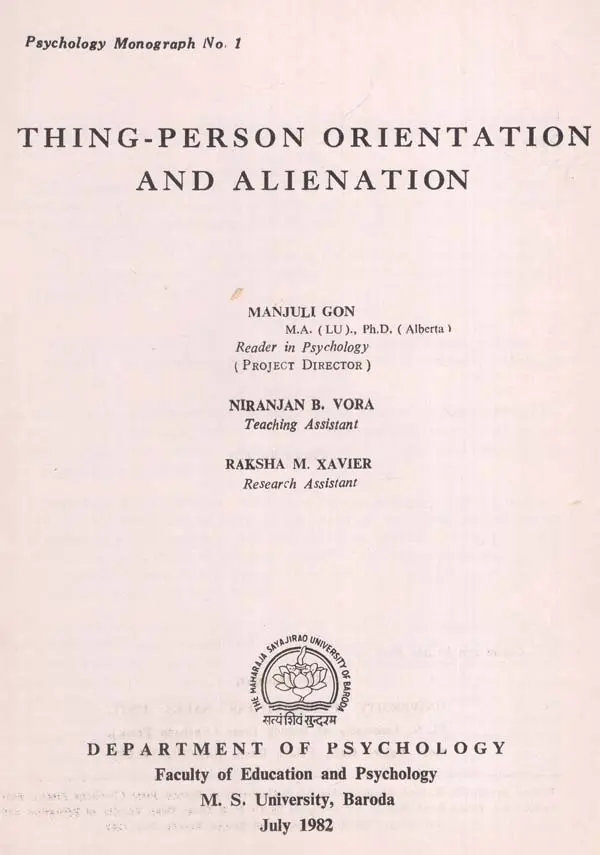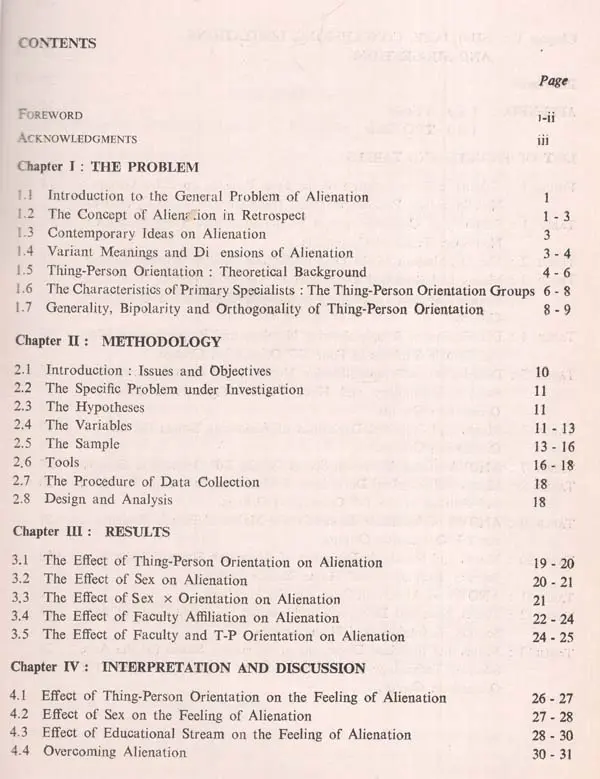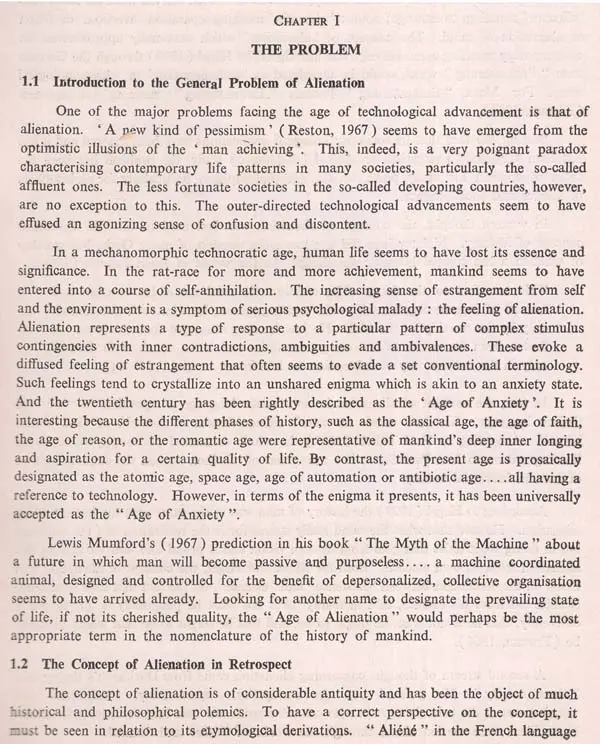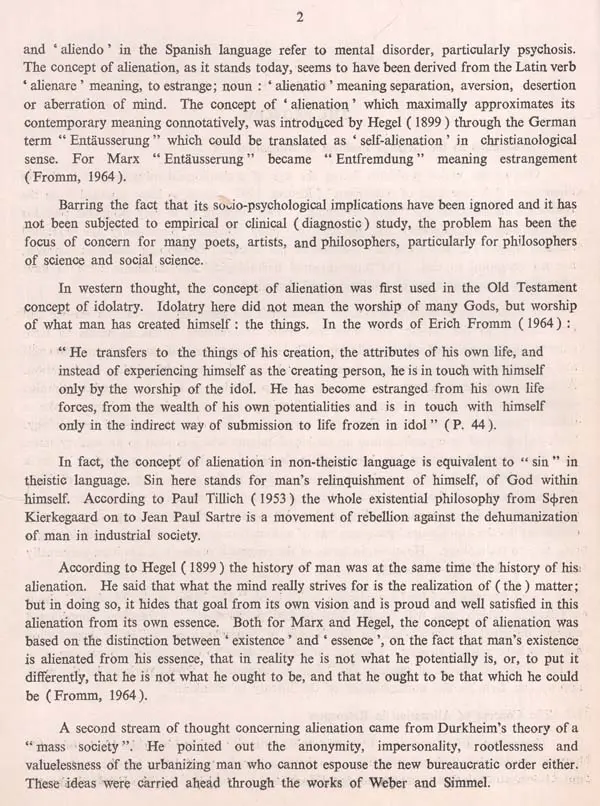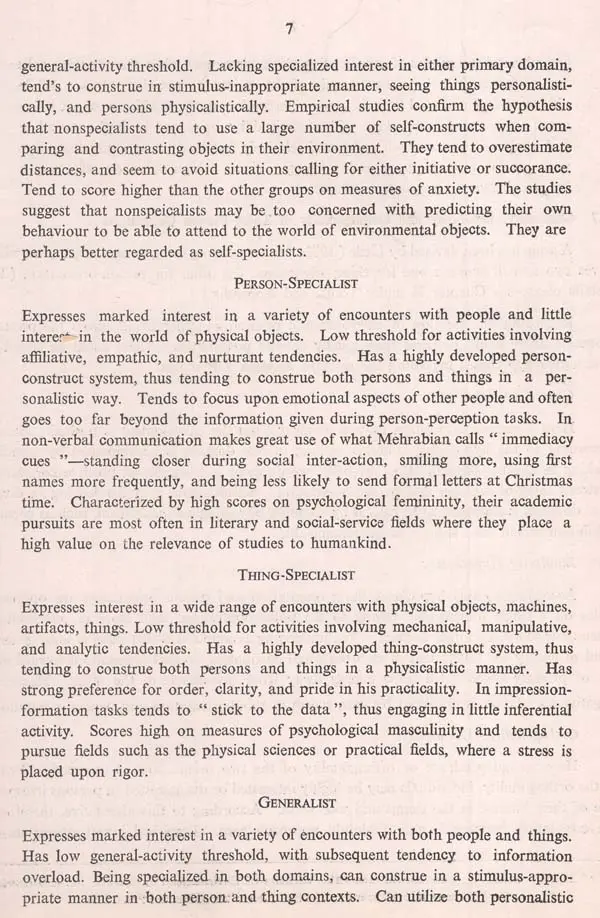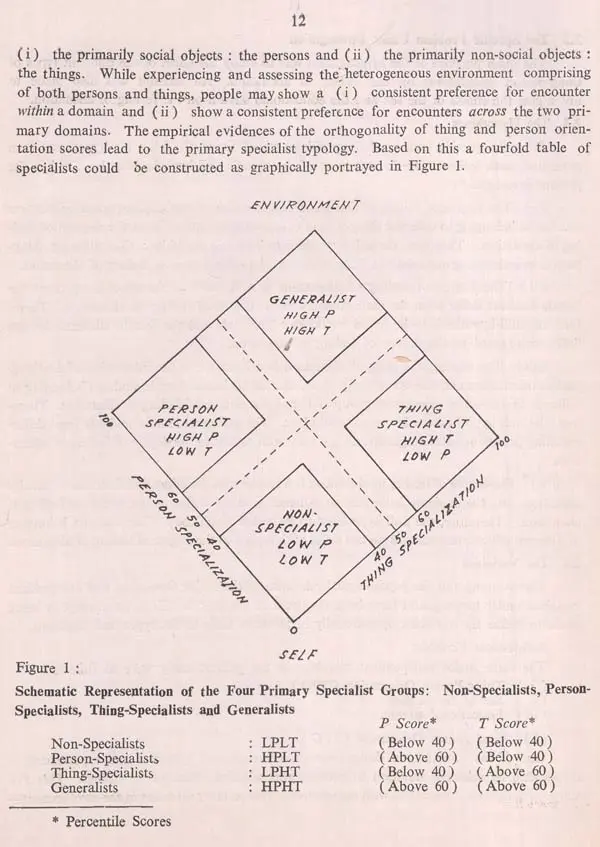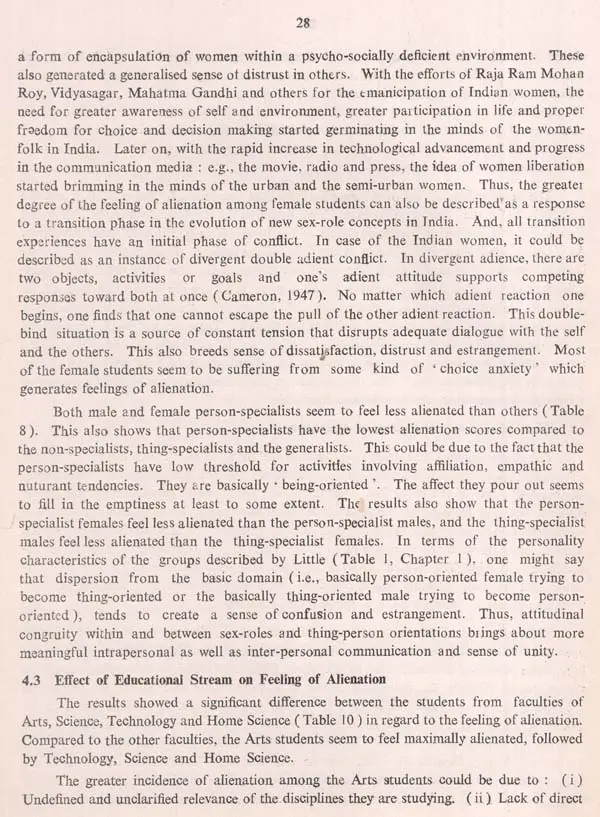
Things-Person Orientation And Alienation (An Old And Rare Book)
Book Specification
| Item Code: | UAQ331 |
| Author: | Manjuli Gon And Niranjan B. Vora |
| Publisher: | The Mahraja Siyajirao University of Barodra |
| Language: | English |
| Edition: | 1982 |
| Pages: | 41 |
| Cover: | PAPERBACK |
| Other Details | 9.80 X 7.40 inch |
| Weight | 100 gm |
Book Description
The monograph Thing-Person Orientation and Alienation is the first in a series of research reports on related themes planned by Dr. Manjuli Gon. The questions posed here arise out of pressing human concerns. In the report we read:
"The simple reason for taking alienation as the subject for investigation is not only its world-wide prevalence in the 20th century......., but its devastating impact on the student body in India"
and
"disregard for 'quality' of human relations and extreme thing-orientedness (as evidenced in the present study) cannot be taken as inevitable and therefore inescapable phenomena."
But apart from having their roots in concern for social issues in contemporary India they are fundamental in the sense that they present a challenge to psychology: do we have theoretical perspectives, concepts, and research methodologies that are adequate for the task of finding meaningful answers?
Research is a risky business. Fortunately we can learn from negative results. I was disappointed to see that there was no correlation between Thing-Person-Orientation scores and measures of Alienation. The lesson that I draw from this is not that the distinction between Thing and Person Orientation is irrelevant, but rather that the conceptualisation of the relation between Thing and Person Orientation offered by Little, the author of the T-P-O typology, needs to be re-examined.
There are positive results too, and the interpretation of their meaning and wider implication also present a challenge to psychology. Two of these results stand out: Arts students have higher alienation scores than students in Home Science, Technology, and Science faculties: female students have higher alienation scores than male students. Manjuli Gon has some perceptive comments on the probable reasons for the higher alienation scores in Arts and in female students. Her comments all have to do with descriptions of psychologically and existentially relevant features of the "environment" in which students are leading their lives: the teaching/learning situation in Arts faculties, the emergence of new sex role concepts in India. The challenge for psychology lies in identifying and conceptualising domains or structures of the "environment" that are most relevant to human functioning.
I have mentioned that future research reports will be devoted to related themes. Having once been Manjuli Gon's teacher and thesis supervisor (as she keeps reminding me) at the University of Alberta I cannot but look back to her earlier work and to note the continuity in her line of enquiry. At the University of Alberta she carried out an experimental and developmental study of person perception, and I note that in the present report the distinction between person and thing perception is taken up in a new context. She was always concerned with pressing social and human issues, whether she was carrying out research categorized under the rubric of personality, or social psychology, or developmental psycho logy, and her search for the appropriate larger theoretical contexts in which specific concrete issues could be viewed was always intensive as well as extensive. In this most important respect she has not changed. We can look forward to a series of interesting and challenging research reports.
WILFRED H.O. SCHMIDT
Professor Emeritus
University of Alberta
Edmonton, Alberta, Canada
